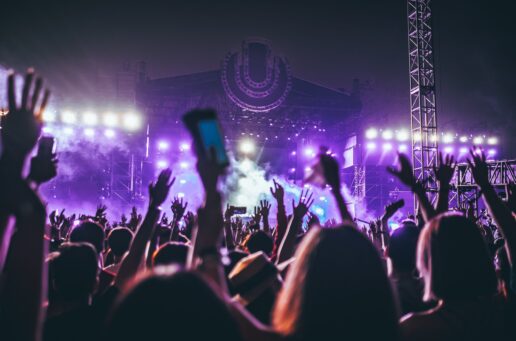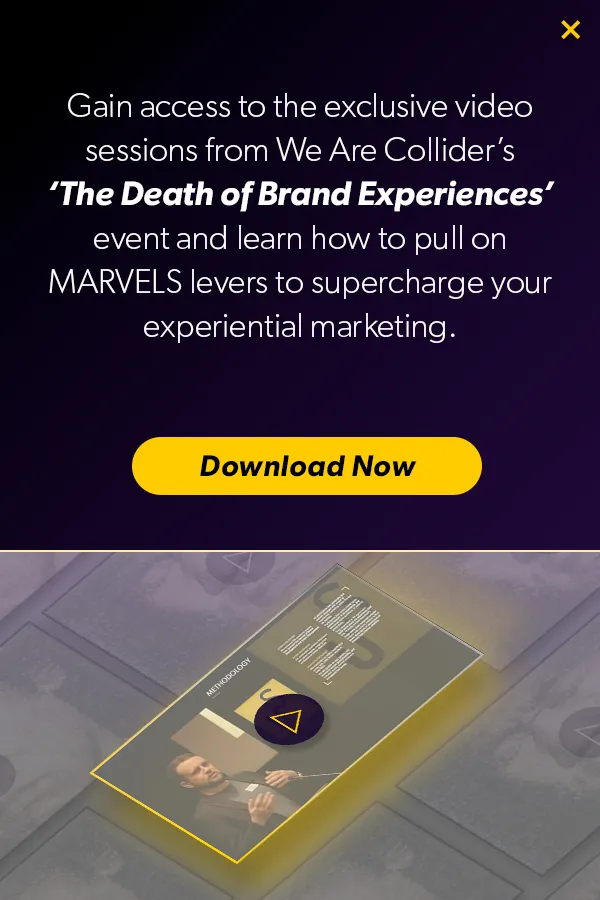
The rise of AI-generated content has been nothing short of remarkable.
From Orange FR’s Women’s World Cup advert which trended to oblivion, to personalised product recommendations on Instagram which seemingly read your thoughts, AI has allowed brands to engage with their customers at unprecedented levels. Aside from promising efficiency and cost-effectiveness, AI has revolutionised the way brands communicate with their audiences. The consumer engagement rulebook is in the process of a re-writing.
Forget OOH, It’s out of this world
These imaginative campaigns are popping up everywhere – they’re allowing brands to produce large quantities of content at speed and with an other-wordly quality. Take, for example, the AI-assisted Maybelline mascara ad set in the tunnels of the London Underground. It may have caused a couple of marketers’ knickers to get in a twist, but here at We Are Collider, we loved it. We were also wowed by the Jacquemus AI-generated advert from last year, featuring a procession of bus-sized handbags cruising through the streets of Paris. (We’re sure you know the ones we’re talking about.)
What we love about these campaigns is the fact they’re forcing agencies to dial up their creativity and think differently about what can be done with AI to create impactful content. AI offers marketers a unique opportunity to craft campaigns that haven’t, until now, ever been done before. That’s because AI can extend beyond the constraints of a humanly-conceived ‘reality’, and provide us with an extra-ordinary rendering of what we thought was impossible. You can’t tell us that as a child you didn’t wish to see your favourite Action Figure as a life-sized human who could walk and talk believably? With AI, the once imagined, becomes possible. There’s no real limit to what it can produce, and we’re just seeing the start of it in the shape of campaigns like those mentioned above.
AI’s impact on transforming the IRL
We’ve found that our single most effective lever to pull when activating is ‘Magic’. Immersing your audience in an activation and conflating the boundaries between dreamed and lived has a real, emotional impact on audiences and builds a brand affinity which is remembered, cherished and powerful. Offering spectacle and escapism to consumers, activating in this way demands boundless creativity if it’s to resonate.
Similarly with Ai-assisted content, when you blur the line between reality and fantasy successfully, not only does a consumer fail to tell the difference between a ‘true’ or ‘crafted’ campaign, they can’t believe there was something they had to fall for in the first place, once they’re in the know. Whether you think the fooling is terrifying or exciting, you’ve got to admit the phenomenon marks a significant chapter in the Marketing history books.
We think that the beauty of AI generated campaigns lies with the magic of not knowing if it’s real or not and as a result, these campaigns are pushing IRL activations to be more imaginative.
Grab Attention & Build Brand Loyalty: Combine forces.
AI content certainly has a place in the current Marketing arena, in how it grabs attention and gets your brand talked about, but where it falters, is in building true brand loyalty as well as brand-advocacy. This is something that the experiential sector benefits from in creating something tangible which we try to incorporate into our activations through our Exchange lever, whereby dynamic consumer interactions result in higher emotion and motivation for participation.
For us, the real holy grail comes with the combining of the two. AI can grab the attention of consumers, particularly ones who haven’t necessarily heard of you before but then brand-loyalty can be built through a real life experience that develops the initial carrot of content further.
We believe that AI-assisted content is brilliant at grabbing consumer’s attention and assuring your brand is getting talked about. That is, so long as they can remember your brand was responsible for the content… What you don’t want, is to generate a ‘wow factor’ response in your consumer via memorable content, just for your campaign to sever itself completely from your brand and exist as a solo entity and or viral piece of cultural memorabilia, so much so that the consumers don’t remember your name. This is where AI-assisted campaigns like the ones we’ve identified, can struggle. When we activate, we strive to apply our Labelling lever, which ensures the brand remains recognisably rooted in every part of their campaign. We’ve found that this helps craft a brand identity which remains in the minds of the consumer long after the brand experience is over.
Conclusion
What brands should be doing is not thinking about AI and IRL as being in diametrically opposed silos. They can and should co-exist – so it’s worth identifying what the brand can do in the digital world, seeking out these limits (as playfully as possible) and simultaneously envisaging how this sense of wonder can manifest itself in the real world. Figuring out all the while, how both can be connected.
Get this connection right, and then you’re looking at a killer campaign that resonates, wows, and anchors into brand identity.



